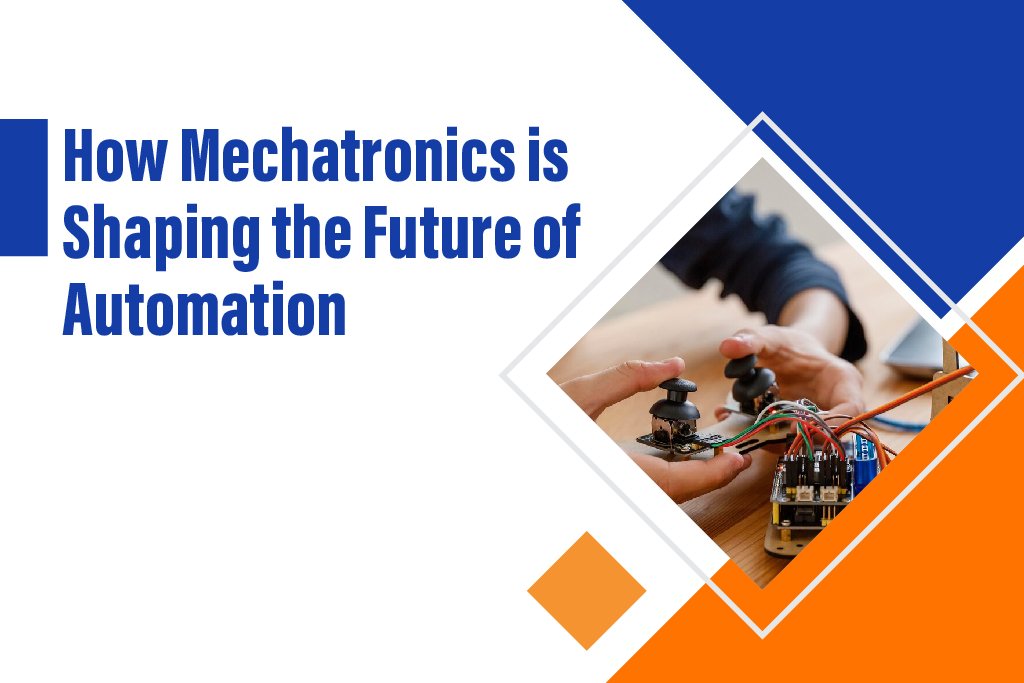
Introduction:
Automation has revolutionized industries globally, and mechatronics stands at the core of this transformation. An interdisciplinary field that draws together mechanical engineering, electrical engineering, computer science, and control systems – mechatronics creates intelligent machines and processes while serving as a bridge between traditional engineering disciplines and digital innovation.
The Growth of Mechatronics
Origin and Development
Mechatronics can be traced back to its beginnings in the 1960s when integrated systems became an increasing need. At first, its applications were limited primarily to manufacturing; over time, however, mechatronics has expanded into various domains, such as robotics and automotive systems requiring seamless hardware-software interaction.
This trend underscores the significance of cooperation between hardware and software for operational excellence. Mechatronics continues to play an increasing role in many industries as an enabler of both innovation and efficiency.
Mechatronics vs Traditional Engineering Disciplines
Contrasting traditional engineering fields, mechatronics is distinguished from them by its emphasis on collaboration and integration across engineering fields. By joining together various domains of study into mechatronics systems design, more intelligent yet cost-efficient designs can be created – providing significant advantages over more interdisciplinary methods when faced with challenging scenarios.
For instance, mechatronics allows engineers to develop adaptive systems that can respond dynamically to changing conditions, a capability that traditional disciplines often struggle to achieve independently.
Core Components of Mechatronics
Sensors and Actuators
Sensors and actuators are the building blocks of automation systems. Sensors detect physical changes, such as temperature, pressure, or motion, while actuators convert energy into motion or other forms of work. Together, they enable automated systems to interact with their environment. Sensors and actuators are indispensable components, from robotic arms in manufacturing to temperature control systems in HVAC applications.
Microcontrollers and Embedded Systems
Microcontrollers and embedded systems form the cornerstone of mechatronic projects, offering real-time control, decision-making capabilities and precision for applications requiring speed.
Arduino and Raspberry Pi platforms have quickly become popular for smaller-scale projects thanks to their flexibility, user-friendliness, and user experience – providing engineers and hobbyists alike the power to efficiently design complex systems efficiently.
Software and Simulation Tools
Software tools like MATLAB and SolidWorks play an indispensable role in designing mechatronic systems. Engineers using these programs can use virtual simulation to design systems virtually, significantly decreasing both development costs and timescales.
Integrating artificial intelligence/machine learning algorithms significantly expands mechatronic capabilities, enabling predictive maintenance services and more informed decision-making processes.
Application of Mechatronics
Robotics
Mechatronics has been at the core of advances in robotics. From assembly-line robots to collaborative robots (cobots), this field has revolutionized manufacturing by improving productivity and safety – especially among collaborative robots that work alongside humans while increasing efficiency without jeopardizing safety.
Beyond manufacturing, robotics powered by mechatronics is making strides in healthcare, agriculture, and disaster response.
Smart Factories
Industry 4.0 heavily relies on mechatronics to create intelligent factory ecosystems. Automated systems with sensors and real-time analytics optimize production processes, reduce waste, and enhance output. Mechatronics and Internet of Things (IoT) technologies help factories achieve unprecedented levels of efficiency and adaptability – creating fully autonomous manufacturing systems in the process.
Autonomous Vehicles
Autonomous vehicles are a true testament to the capabilities of mechatronics. Sensors, machine learning algorithms, and control systems help ensure safe driving for passengers and pedestrians on roads around them. Mechatronics ensures these components can work together seamlessly.
So vehicles can make real-time decisions with minimum risk for passengers and pedestrians. Transportation and mobility may change dramatically in the coming years as improvements in autonomous systems are expected.
Automation Applications of Mechatronics
- Enhance Precision and Efficiency: Mechatronic systems excel at high-precision tasks like micro-manufacturing and medical device assembly, making industries’ operations much more accurate and consistent than before by automating these processes.
- Reducing Human Error: Automation decreases human errors in repetitive operations by using mechatronic systems, thus maintaining quality, reducing defects, and improving overall reliability.
- Production Cost-Effectiveness in Manufacturing: Though initial investments can be considerable, their long-term returns often outweigh the costs. Increased energy efficiency, decreased waste levels and greater productivity all translate to significant cost savings in time – making mechatronic systems an efficient answer to modern manufacturing problems.
Development Challenges of Mechatronics Solutions
- System Integration can be Complicated: Integrating multiple technologies into a cohesive system is a significant challenge in mechatronics. Successful implementation requires careful preparation and expert oversight in order to guarantee compatibility and functionality.
- High Initial Costs: The development of mechatronic systems often comes with considerable upfront investments, which could be a bottleneck for small enterprises in adapting these technologies on a greater scale.
- Skill Gaps in the Workforce: As the demand for mechatronic engineers continues to rise, the sector has already seen the arrival of a talent gap. Professionals should, therefore, be trained with targeted education in designing and maintaining mechatronic systems.
Future Trends in Mechatronics and Automation
- Integration of Artificial Intelligence: Artificial Intelligence promises to transform mechatronics by providing predictive maintenance, autonomous decision-making and enhanced system optimization capabilities. AI-powered systems can adapt dynamically to changing conditions, ensuring greater efficiency and reliability compared with IoT enabled solutions.
- Advancements in IoT-Enabled Systems: IoT connects mechatronic devices seamlessly, facilitating data exchange and control for more brilliant, responsive systems that operate autonomously while providing real-time feedback.
- Growth of Automated Automation Solutions-Expanding Capabilities: Sustainability has quickly become one of the primary objectives in mechatronics, with innovations like energy-saving robots and waste reduction technology emerging as trends that align with global efforts for more eco-friendly solutions. Such advancements will facilitate development of systems which combine effectiveness with sustainability.
Conclusion
Mechatronics stands at the forefront of modern automation, driving revolutionary advancements across industries. By merging mechanical, electrical and computational technologies into more intelligent systems that improve traditional processes – mechatronics has given birth to intelligent automation processes with better outcomes than before.
Now with AI, IoT, sustainability practices emerging daily – mechatronics may take yet more significant leaps forward, creating an intelligent world more mindful of its environment than ever.
